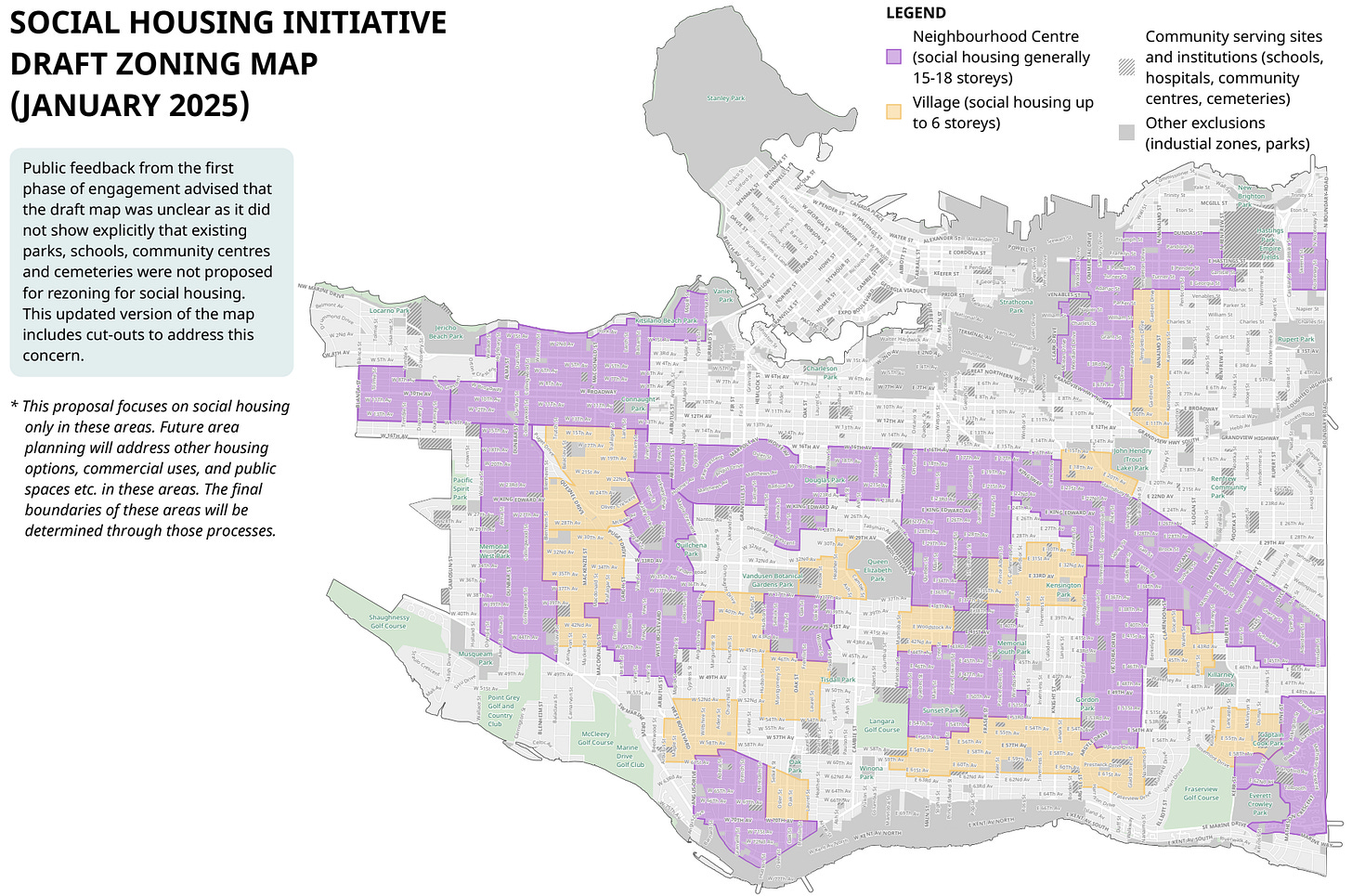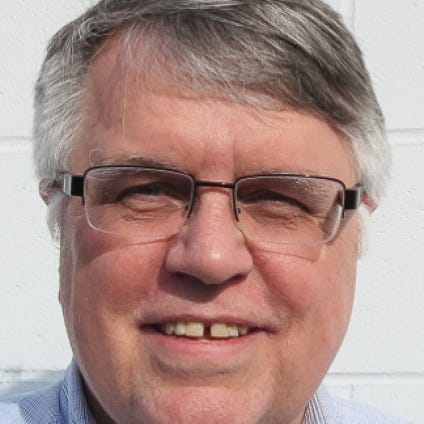Part 5—the 2025 Vancouver by-election is about many problems but only one issue—open communications between government and governed
CC#149—The Vancouver Plan is the only plan that matters
There is only one issue in this by-election
My son and I were carrying on with our conversations around how open communications between government and governed is the only Vancouver by-election issue. He saw my City Conversation title on my computer screen and jumped in before I had time to set the scene.
“You’ve written literally for years now about the problems with various plans—the Broadway Plan, Jericho, Oakridge, False Creek North, you name it! How can you now ignore them all in favour of the Vancouver Plan?”
“Because,” I responded quickly, “the Vancouver Plan includes all of the area plans and spot rezonings that have spread like a pox across the city. When the first Vancouver Plan was published almost two years ago, I described it as having “muddy edges everywhere.” I should have realized that the vagueness was deliberate. It’s not a Plan—it’s a plan to make a Plan, and at a pace and focus that suits city staff and pols, not the citizens.”
The Vancouver Plan in all its fuzzy-edged glory
He looked quizzical for a moment, then annoyed. “A plan to make a Plan is just semantics! We need more than that!”
I smiled. “I agree we need more than that, but we’re not getting it from the City. Why do you think the edges of all the coloured blobs are fuzzy?” He shrugged so I continued. “It’s because city staff and pols want to keep it as vague as possible for as long as possible. How else to accommodate real estate development interests that are still out and about assembling property at pre-Plan prices?”
“Already,” I continued, “we’ve had major revisions, the latest being the city’s social housing program.”
“You can’t really be criticizing social housing, can you?” he asked, more than a little aghast. “You’ve had a lot to say in favour of it for years, both in your City Conversations and, it seems, to anyone who’ll listen!”
“For me, the issue is not the breadth of coverage,” I explained. “The issue for me is that the designated areas for social housing cover large parts of 19 of the city’s neighbourhoods—all except the West End, the Downtown East Side, Fairview and Mount Pleasant.”
I continued. “The area designated for social housing is about five times the area covered by the Broadway Plan—again, no issue in principle. BUT, and it’s a big BUT, within these hundreds of blocks in most of the city’s neighbourhoods rezoning will not be required for social housing projects ranging in height from six to 18 storeys. And let’s not forget that in this city, social housing can be 70% market rentals, only 30% so-called affordable.”
The social housing areas are in purple and orange
He shook his head at that 70/30 proportion, but continued. “So how does the singular Vancouver Plan relate to all the publicity around the Broadway Plan?” he asked. “I know the Broadway Plan is a part of the Vancouver Plan, but it seems it’s getting way more traction than the Vancouver Plan.”
“Agreed,” I responded, “and that’s a danger for this upcoming by-election. The Broadway Plan stops at Clark Drive in the east, Vine Street in the west, and 16th Avenue in the south—at most 15% of the city’s geographic area. Every time we focus on Broadway Plan atrocities we appear to be ignoring the many problems the Vancouver Plan causes east of Clark and south of 16th.
We are in danger of allowing political opponents of whatever stripe to dismiss us as entitled west siders. I think the timing of the Broadway Plan proceeding ahead of parts of the Vancouver Plan in other neighbourhoods is deliberate. We may be articulate but are handicapped by our proximity to many of the west side development battle front lines—makes it easier for supporters of rampant redevelopment and destruction of the city where we love to live to box us in.”
“What’s the solution to that?” he asked.
“We need to notice that the Broadway Plan is part of the Vancouver Plan, which is the greater danger in all its fuzzy vagueness. We need to shift the conversation citywide to the Vancouver Plan’s problems—there are certainly many of those and once the Vancouver Plan is approved as Vancouver’s Official Community Plan (OCP) before the next election, it may be too late for any part of our city.”
“I guess, Dad, your single index finger pic could refer to the Vancouver Plan as the only Plan that matters.” He smiled at his observation.
“Agreed,” I responded, “except it would need to be a different finger.”
The post above is just over 750 words, 50% more than the three minutes that Vancouver City Council now permits for public presentations at its meetings.
If you appreciated this post, please share to your social media and consider becoming a free subscriber to City Conversations at
Brian Palmquist writes on the traditional, ancestral and unceded lands of the Musqueam people. He is a Vancouver-based architect, building envelope and building code consultant and LEED Accredited Professional (the first green building system). He is semi-retired, still teaching, writing and consulting a bit, but not beholden to any client or city hall. These conversations mix real discussion with research and observations based on a 50-year career including the planning, design and construction of almost every type and scale of project. He is the author of the Amazon best seller and AIBC Construction Administration course text, “An Architect’s Guide to Construction.” A glutton for punishment, he recently started writing a book about how we can Embrace, Enhance and Evolve the places we love to live.







